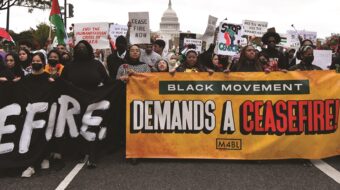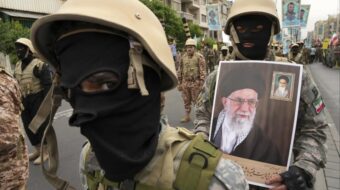
As Veterans Day in the United States approaches we will likely see a temporary increase in television programming focusing on the wars in which Americans have fought. World War II is often the focus of these feature films and documentaries. Those who participated in this struggle against fascism abroad and in many cases returned home to campaign for peace, have even been termed America’s “greatest generation.”
It is surprising therefore with this sort of annual homage to these veterans that Americans know so little of the role of their most crucial ally during the war – the USSR.
In 1978 the Soviets aimed to end this ignorance with an English language documentary entitled, “The Unknown War,” the complete series of which is now thankfully available on DVD.
Sadly, upon it’s original release in the United States, anti-communist hysteria prevented the program from getting much publicity or even air time. I recall that in my own hometown one television station aired it during their final evening time slot, just prior to concluding transmission for the day.
Each of the 20 installments is introduced and narrated by Academy Award winning actor Burt Lancaster. The episodes occasionally feature short interviews with war survivors who are both everyday citizens and historical notables of the period, but mostly it is wall to wall sustained footage from the war, and amazing footage it is.
The production is very comprehensive and includes information often overlooked by documentaries in the West. It details the Soviets desperate pre-war bids for peace, first appealing to the governments of Poland, Great Britain and France in August of 1939 to form an alliance for defense against fascism. When talks with Poland broke down the Soviet Defense Minister made proposals to Britain and France alone, proposals that would go unanswered and forcing the USSR into a non-aggression pact with Germany to buy time and build defenses.
Time and again the series details the grim determination of the Soviet people to survive. In a familiar pattern of treachery carried out by the capitalist powers, the Nazis, not unlike their Japanese allies at Pearl Harbor, did not bother to declare war before hurling five million men against the USSR along an 1,800 mile front on June 22, 1941. The German ambassador had assured a nervous Soviet Foreign Minister Molotov only a day prior that Germany wished only for peace.
US Army Chief of Staff George C. Marshall informed President Roosevelt that the Soviet Union would fall in less than three months. Thankfully, in the 10 years prior to the invasion, the Soviet people had initiated a crash program of industrialization with workers mastering new technology and learning as they labored. If they had not built up this independent economy the outcome may well have been similar to the capitalist nations of Western Europe with quickly collapsed, capitulated or collaborated when challenged by the Third Reich.
The series not only covers in detail the battles with which even most casual observers of history are familiar – the siege of Leningrad, the battle for Moscow, the defense of Stalingrad, but also those aspects of the Soviet war effort that even dedicated historians are barely familiar. One of these comes near the close of the documentary in an episode entitled ‘The Last Battle of the Unknown War’ and covers the Soviet war against Japan and even includes footage of Soviet soldiers liberating American POW’s who had been languishing for years in Japanese captivity. Other episodes focus on the contributions of the Soviet Navy, Air force and the Partisans; citizen soldiers who waged war even after their villages became trapped behind enemy lines. And always and everywhere there are the staggering and grim statistics of the number of lives lost and homes destroyed.
Americans would do well to recall that 80 percent of the Nazi armies causalities were sustained on the Russian front. Were it not for the sacrifice of the heroic Soviet people the world may well have fallen to those who promised “a thousand year Reich” and sought to purify the world by first consigning the works of Voltaire, Darwin, and Marx to the bonfires and later sending human beings into the fires as well. Viewing this magnificent production is an excellent way to both learn and remember.
Photo: Amazon.com












Comments